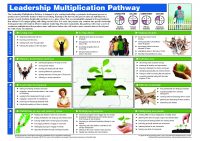One of the exercises from our Leadership Collective, that supports the work of church planters and pastors, is for participants to design their disciplemaking process. One of the participants is a regional leader for his denomination. Glenn Spyksma (second from the right in the photo above) gives leadership and oversight to roughly 30 churches.
Therefore, he has the ability to view the disciplemaking process from two vantage points:
- As the member of a local congregation
- As the overseer of multiple congregations
He landed on a curious question a few month ago:
“What are the minimum tools a disciple needs to become a disciplemaker?”
Before I go further I should mention that he comes into the Leadership Collective with a business background as the former Vice President of a large, international corporation. This is what Glenn came up with from his interactions with pastors and church planters who have robust disciplemaking ministries, in his r ion.
Below are four developmental skill attributes which are common in some people that excel in discipleship. In this case discipleship begins with you discipling a non-believer and culminates in that individual leading/mentoring/coach discipling a non-believer at the beginning of their journey. One of the fundamental and scary shifts is the realization and facilitation of the priesthood of all believers. Everyone “Go and make disciples”.
- Prayer for me
- To understand Christ’s biblical foundation
- To have a heart and mind for the lost that translate to compassion and action
- To see who God is leading my way
- Prayer for those God is leading my way to be open to the touch of the Holy Spirit
- Without both it is difficult to have a discipleship cycle.
- Without one of the two it may be a ramp not a cycle.
- Develop a process that you believe in and will use
- “I do you watch” to “You do and I watch” to “You do and some else watches”
- With God
- With yourself with grace
- With those God has entrusted to you
We used the resources above as a framework – then each participant was asked to create their own disciplemaking process, draw it on a napkin and explain it in a 3-minute video. It was exciting to hear common themes, distinctives and overall clarity as the leaders presented. Can you explain your disciplemaking cycle in a clear, concise and simple way; so someone unfamiliar with your cycle can understand it, in a matter of minutes?




How can you disciple a non-believer? I can understand leading a lost person to Christ, then discipline that person; but I question discipline one who doesn’t know Christ.
This is THE question Donald.
Who was Jesus speaking to in Matthew 28:18-20?
“The answer is, His Eleven disciples. The important point to note is: Whatever Jesus is about to say refers to someone else other than those who are already believers. When we read the passage we need to see that ‘making disciples’ does not start with someone who is a believer but starts with those who are not believers.*
Does that make sense?
I look forward to your feedback.
*As You Go… Make Disciples” by Colin Noyes (p.4)